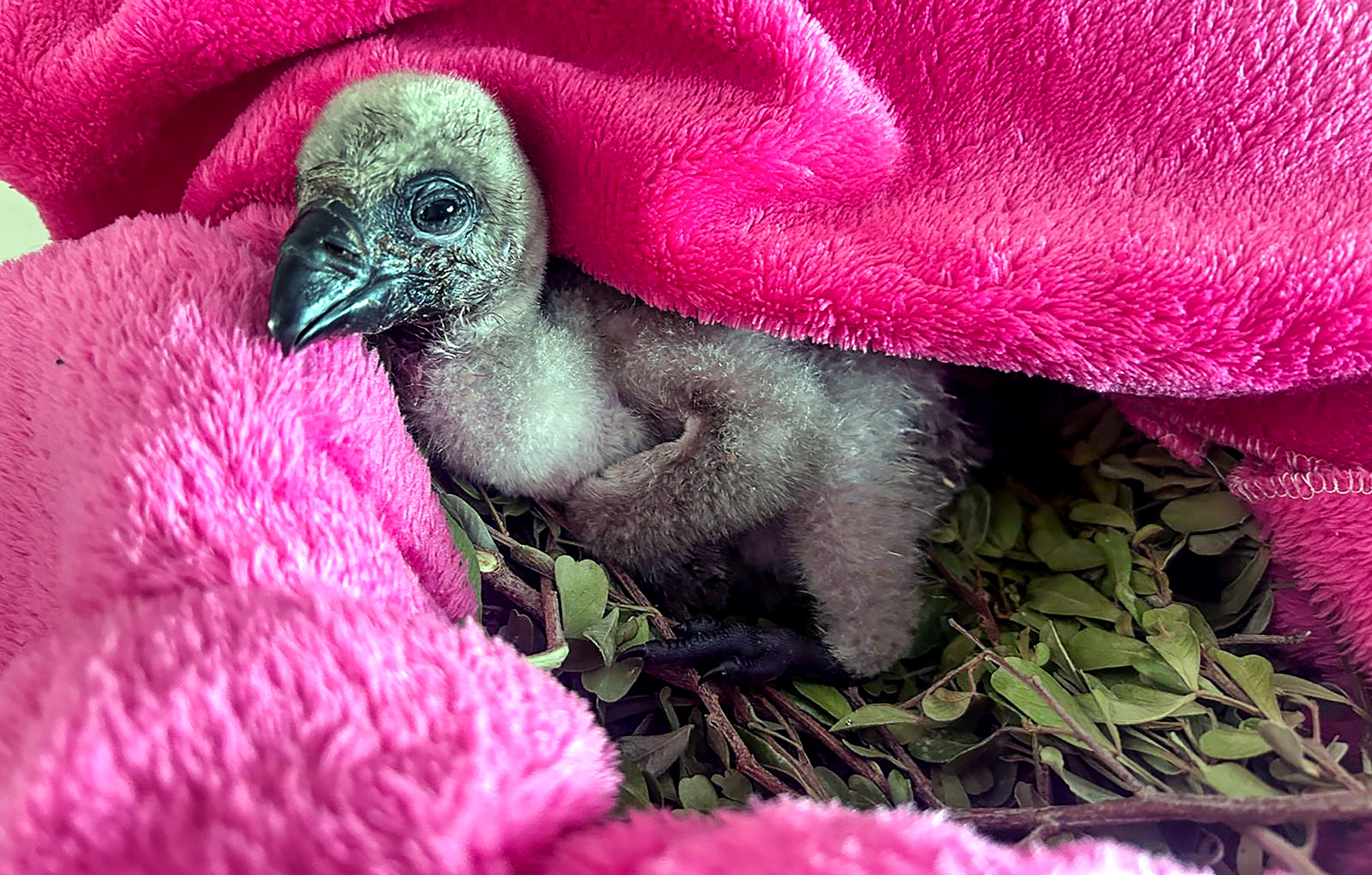Just over a year after completing South Africa’s largest-ever vulture relocation, conservation non-profit Vulpro is celebrating a breakthrough breeding season — with 23 vulture chicks hatched at its new facility at Shamwari Private Game Reserve in the Eastern Cape.
The chicks, all born since 1 July, mark a significant milestone for the species and for Vulpro’s Captive Breeding Programme, which relocated 160 birds across 1,042 kilometres from a facility in Hartbeespoort to purpose-built enclosures at Shamwari in 2024.
On Thursday, Vulpro CEO Kerri Wolter said of the 23 hatchlings, 20 were Cape vultures and three were white-backed vultures, with “still more to come. We’re hoping to have five white-backed this year,” she said.
Vultures in crisis
The relocation and breeding success form part of a broader effort to prevent the collapse of Africa’s vulture populations, which face a perfect storm of threats — from habitat loss and poisoning to powerline and wind turbine collisions.
Read more: Fears of a syndicate plot to wipe out all Lowveld vultures after 100 more poisoned
Vultures are also naturally slow to reproduce, with some species reaching sexual maturity only after seven years and laying just one egg per year. Even under ideal wild conditions, only around 5% of chicks survive to adulthood. In some parts of South Africa, local extinctions have been recorded.
“It’s important to note that when vultures reduce to critical levels, they also stop breeding,” warned Wolter. “We need to prevent that whilst simultaneously addressing the threats.”
/file/dailymaverick/wp-content/uploads/2025/08/Screenshot-2025-07-21-204309.jpg)
Teaming up
For Shamwari general manager Joe Cloete, teaming up with Vulpro was a no-brainer.
He said, “It’s all about conserving a vanishing way of life. We’ve brought back various other animal species that used to occur in the Eastern Cape. The vultures are no different.
“You need vultures in the greater ecosystem because they clean the African bush. They form a very important cog in the whole ecosystem.
He said Cape vultures and Egyptian vultures were indigenous to the Eastern Cape. “It’s just part of what we do at Shamwari to rewild this area. We brought back the flightless dung beetle and the red-billed oxpecker, and the Cape vulture is no different.”
Wolter said the hatchlings would be released in provinces where they originated, with the white-backed vultures going to the northern parts of South Africa and the Cape vultures set to be released in the Eastern Cape.
Cloete said it was fascinating to see where the vultures flew once they’d been released.
He said after incubation and hatching, chicks were returned to their “original mom for six months, and then they go into a pre-release enclosure for about six months” before being released into the wild with transmitters so their movements can be followed.
“You know, people actually follow their movements … there are all sorts of funny apps you can go on and you can find out where the birds are moving,” said Cloete.
Grounded but giving back
Vulpro exclusively uses non-releasable birds for breeding. These birds, while unable to return to the wild because of injuries or disabilities, can still contribute to their species’ survival through reproduction.
Wolter said, “What’s so special about our programme is that all our non-releasable disabled birds are able to still have value. They’re not just sitting in an enclosure being viewed or kept on an asset register with a price tag on their heads; they are used to contribute to their wild counterparts’ survival.”
She said this approach eliminated the ethical concerns of removing healthy wild birds from already fragile populations while providing a meaningful purpose for injured raptors that would otherwise require lifelong care.
Breeding, behaviour and biology
Wolter said managing a successful breeding programme required an intricate understanding of vulture behaviour and biology. The birds are monogamous, with breeding pairs sharing responsibilities for nest building, incubation and chick rearing over a 54-day incubation period.
“Sometimes they fight over who’s breeding the chick or who’s incubating the egg. They fight for those responsibilities. To me, that is quite cute. Breeding always shows me how fragile and how gentle they are,” she said.
The programme employs sophisticated techniques, including double clutching, where removing the first egg can stimulate birds to lay a second one, effectively doubling reproductive output. Careful record-keeping ensures genetic lineages are maintained, and chicks are returned to their biological parents after assisted hatching when necessary.
“The importance of any captive breeding programme is very, very stringent record-keeping. You know which egg and which chick needs to go back to which pair,” explained Wolter.
/file/dailymaverick/wp-content/uploads/2025/08/Untitled-design-22.jpg)
Lessons from Asia’s vulture crisis
Vulpro’s approach, she said, drew crucial lessons from the Asian vulture crisis, where delayed action nearly resulted in complete extinction. Asian conservation efforts required capturing healthy wild birds for breeding programmes after populations had already crashed.
“If anything, what we learned from that breeding programme is that it is never too early to start a founding population of species before you have to take birds out of the wild,” said Wolter. “The success of your breeding programme takes years to nurture.” DM




 More than 20 vultures were born during the current breeding season at Shamwari Private Game Reserve in the Eastern Cape. (Photo: Supplied / Vulpro)
More than 20 vultures were born during the current breeding season at Shamwari Private Game Reserve in the Eastern Cape. (Photo: Supplied / Vulpro)